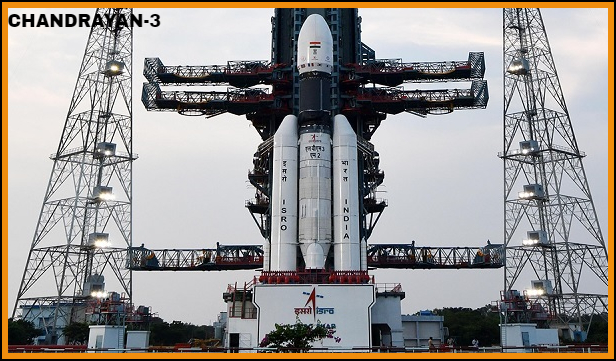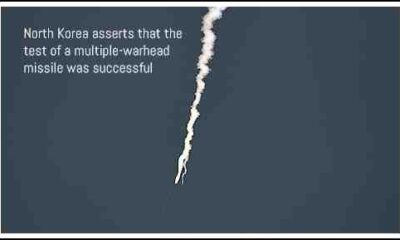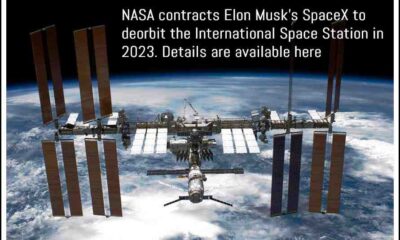CHANDRAYAAN-3
Big Statement From Space Agency Chief Regarding Chandrayaan-3 Landing
Published
11 months agoon

Mr Somanath stated during a discussion on Chandrayaan-3: Bharat’s Pride Space Mission’ that the entire design of the lander Vikram’ has been built to ensure that it can manage failures
Bengaluru: According to ISRO Chairman S Somanath on Tuesday, Vikram, the lander of India’s third lunar mission Chandrayaan-3, will be able to achieve a soft landing on the Moon’s surface on August 23 even if all of its sensors and two of its engines fail.
At a discussion on “Chandrayaan-3: Bharat’s Pride Space Mission,” given by the nonprofit organization Disha Bharat, Mr. Somanath stated that the overall architecture of the lander “Vikram” ensures that it would be able to endure malfunctions.
“Even if everything goes wrong, if all the sensors stop working, nothing works, Vikram will still land. As long as the propulsion system functions properly, that is how it has been planned, according to Mr. Somanath.
On July 14, Chandrayaan-3 launched into space, and on August 5, it entered lunar orbit. Three further de-orbiting maneuvers will be performed in an effort to bring Vikram closer to the Moon so that he might touch down there on August 23.
According to Mr. Somanath, these de-orbiting maneuvers will be carried out on August 9, August 14, and August 16 until the Moon is within 100 kilometers of the spacecraft’s orbit.
After lander “deboost,” which slows the ship down, an exercise to separate the propulsion module will be conducted. On August 23, a landing on the surface of the moon would occur afterward, he said.
“We have also ensured that if two of the engines (in Vikram) do not work this time, it will still be able to land,” the ISRO chief said.
Read also:-The opposition submitted a motion of no confidence because they were anxious, the prime minister said: We prevailed despite some pushing for voting in the Rajya Sabha semifinal before 2024
“So the entire design has been made to ensure that it (Vikram) should be able to handle many failures, provided the algorithms work properly,” he added.
According to him, the toughest task for the ISRO team is to make a horizontal ‘Vikram’ land vertically on the lunar surface.
Mr Somanath stated that once the lander separates from the orbiter, it will move horizontally. It will be raised to a vertical attitude by a series of maneuvers in order to land safely on the Moon.
This practice is critical because ISRO failed to successfully land its lander on the Moon’s surface during the Chandrayaan-2 mission.
“The trick we have to play here is the capacity to switch from a horizontal to a vertical direction. We only encountered an issue here the first time,” Mr. Somanath noted.
According to the ISRO chief, the issue is to ensure that fuel consumption is reduced, distance computations are accurate, and all algorithms function as intended.
But this time, the ISRO team has put plans in place to guarantee that Vikram makes an attempt to land even if there are any changes in the calculations, according to Mr. Somanath.
He claims that the lander will carry the following four payloads: The lunar surface’s thermal characteristics will be measured by Chandra’s Surface Thermo Physical Experiment (ChaSTE).
The NASA Laser Retroreflector Array, an instrument for measuring lunar seismic activity, and the RAMBHA-LP payload will all be used to study the near-surface plasma (ions and electrons) density and its variations over time.
Three payloads will be carried by the rover called “Pragyan”: The elemental makeup of the rocks and soil on the moon will be determined using the Laser Induced Breakdown Spectroscope (LIBS), which is located near the lunar landing site.
To improve our understanding of the lunar surface, the Alpha Particle X-Ray Spectrometer (APXS) payload will determine the chemical composition and infer mineralogical composition.
In Pragyan, there is an experimental payload called Spectro-Polarimetry of Habitable Planet Earth (SHAPE) that is designed to investigate the spectro-polarimetric signature of the habitable planet Earth in the near-infrared (NIR) wavelength region.
You may like
-


North Korea asserts that the test of a multiple-warhead missile was successful
-


The Student Wing of Congress storms the Exam Body NTA office and locks it from within
-


“During President Murmu’s address to Parliament, PM Modi was shown 73 times, and LoP Rahul Gandhi was shown six times”: Congress
-


NASA contracts Elon Musk’s SpaceX to deorbit the International Space Station in 2023.
-


A Caution For The CBI In The Delhi Court’s Arvind Kejriwal Custody Order
-


Bar Council of India requests that bar associations abstain from demonstrating in opposition to new criminal laws
